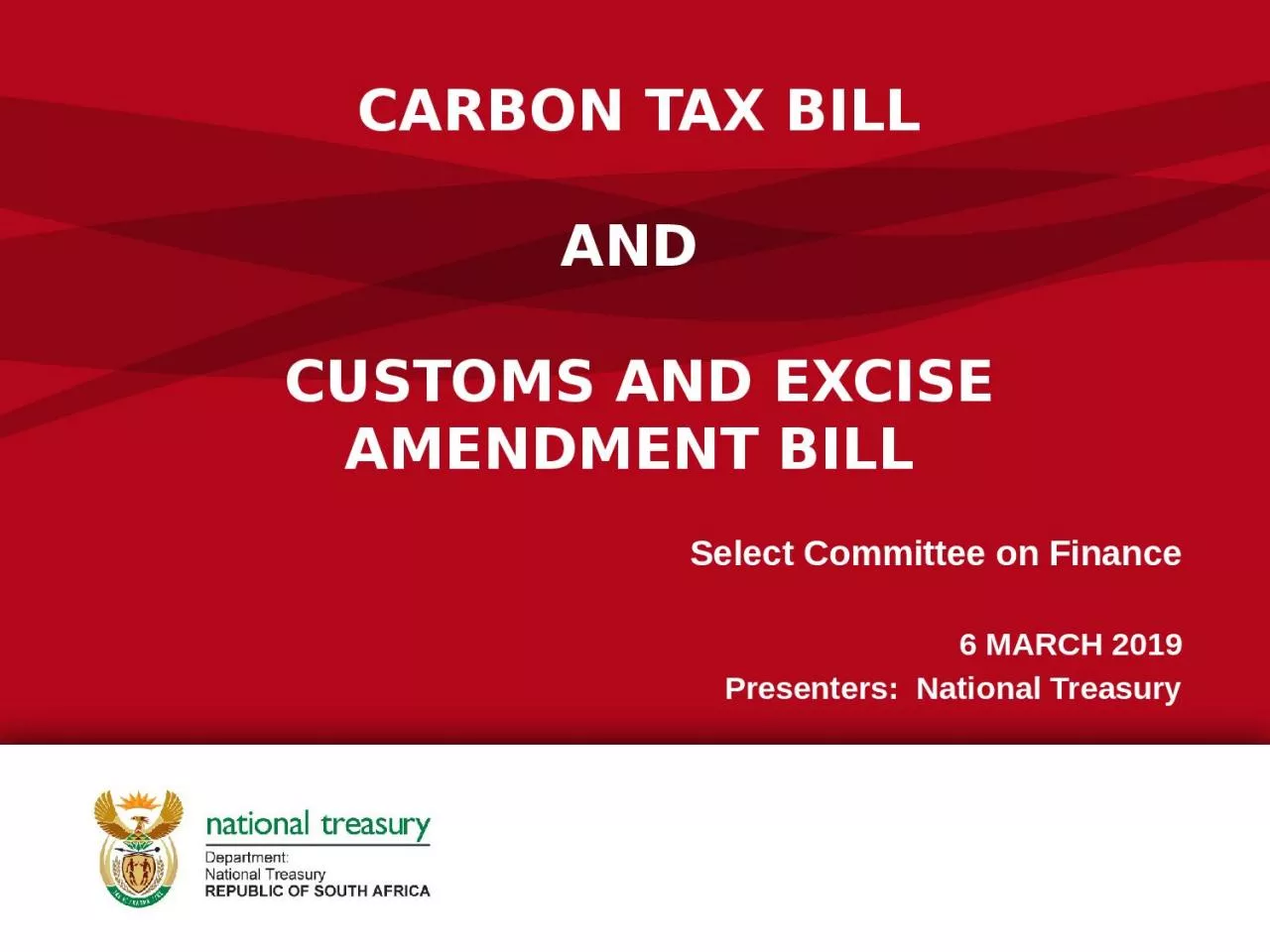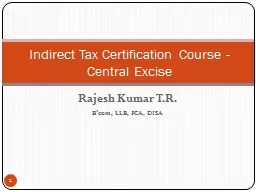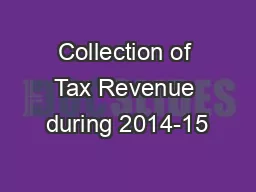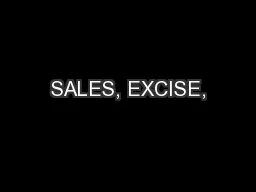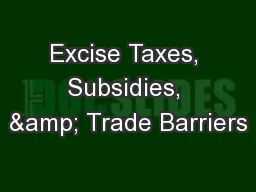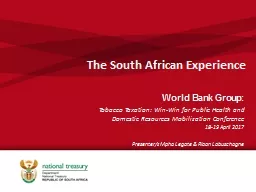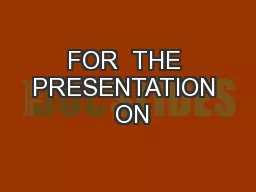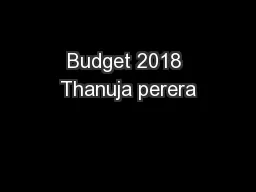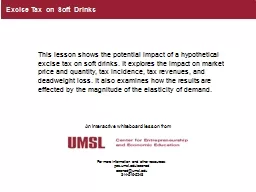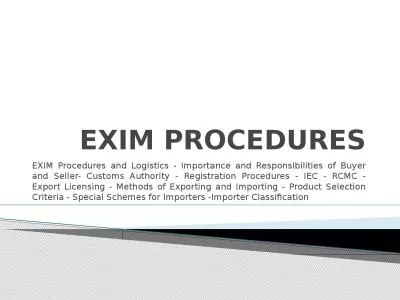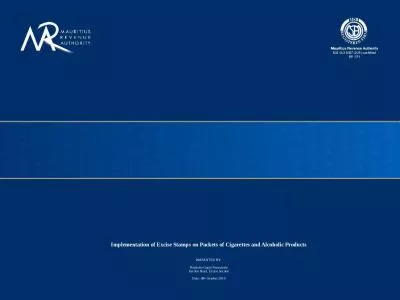PPT-CARBON TAX BILL AND CUSTOMS AND EXCISE AMENDMENT BILL
Author : elizabeth | Published Date : 2023-11-05
Select Committee on Finance 6 MARCH 2019 Presenters National Treasury Presenters National Treasury Ismail Momoniat Yanga Mputa Memory Machingambi Sharlin
Presentation Embed Code
Download Presentation
Download Presentation The PPT/PDF document "CARBON TAX BILL AND CUSTOMS AND EXCIS..." is the property of its rightful owner. Permission is granted to download and print the materials on this website for personal, non-commercial use only, and to display it on your personal computer provided you do not modify the materials and that you retain all copyright notices contained in the materials. By downloading content from our website, you accept the terms of this agreement.
CARBON TAX BILL AND CUSTOMS AND EXCISE AMENDMENT BILL: Transcript
Download Rules Of Document
"CARBON TAX BILL AND CUSTOMS AND EXCISE AMENDMENT BILL"The content belongs to its owner. You may download and print it for personal use, without modification, and keep all copyright notices. By downloading, you agree to these terms.
Related Documents

